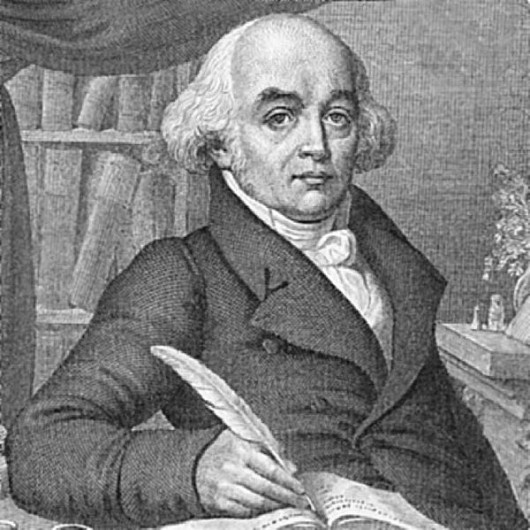What is homeopathy? (Insert controversy here)
- 4 ways your child may not tolerate cow’s dairy: allergy, milk protein sensitivity, cerebral folate deficiency, and lactose intolerance - January 3, 2024
- 5-hydroxytryptophan (5-HTP) and the “feel good” neurotransmitter serotonin - October 4, 2023
- Quercetin supplementation for children: research, safety and efficacy - May 13, 2023

Easily the most misunderstood and explosively controversial subject in Complementary and Alternative Medicine is that of homeopathy.
Before I begin, let me say that I’m going out on a bit of a limb with this post, because I’m sure to tick off both advocates and vehement opponents of homeopathy with this discussion. As with all my posts, I welcome dialogue in the comments section. However, please keep it civil – there is enough hatred in the world as it is, there is really no reason to get so inflamed over a subject like homeopathy. I’m trying to present a neutral view of homeopathy for the readers so they can decide for themselves.
First, the history:
Homeopathy was founded by Dr. Samuel Hahnemann in the late 18th century as a reaction to the highly invasive procedures that were standard in the medical community at that time (bloodletting, purging, and the use of toxic metals as “medicines”). The story goes that Dr. Hahnemann became fascinated with the properties of Cinchona bark which was a relatively new medicine for the treatment of malaria. Hahnemann noticed that if he took the cinchona bark in the absence of malarial illness that it produced symptoms remarkably similar to malaria. This formed the basis of Hahnemann’s theory of “similars” – that substances which produce a certain set of symptoms in an otherwise healthy person should be used to treat a sick person with those same symptoms. In other words: “Let likes be cured by likes” (Hahnemann’s words, translated from latin).
Hahnemann noticed that large doses of the curative substance were not necessary to produce a reaction in a susceptible person. He experimented with cures by diluting substances further and further, a process called “potentizing” (I’ll explain more later). Hahnemann claimed that diluting reduced the toxic effects of the drug, while still allowing the body to recognize the substance and produce a cure.
I should note here that Hahnemann calls the ability of the body to heal the “Vital Force” of a person. According to Hahnemann it is the vital force which recognizes a homeopathic treatment, and the vital force which precipitates change. Obviously this concept is a little outdated in modern science, but I think it can be a good metaphor for the way our bodies heal and produce homeostasis (see my article on The Vis Medicatrix Naturae). In my opinion, the vital force can include all the biochemical, mechanical, electrical, and neurological processes which cause change.
Hahnemann expanded his formulary from cinchona to hundreds of homeopathic remedies by testing out each substance on dozens of volunteers (mostly students). His dutiful subjects recorded each and every symptom they experienced when taking a particular substance, and these were compiled into a detailed Materia Medica. The symptoms that appeared consistently amongst subjects were noted in the process. These common symptoms are what dictate what remedy a patient should have. For example, a patient with a sudden onset high fever, throbbing and congested headache with a red face and dry mucous membranes would receive the homeopathic remedy Belladonna.
Okay back to potentizing – the least understood and most controversial aspect of homeopathy. Hahnemann originally diluted substances just a few times using a process of “potentizing”. This involved “succussion,” or vigorously shaking the substance by striking it (like pounding a glass bottle full of liquid against your hand). Homeopaths claim that each time the substance is diluted and subsequently succussed that it actually becomes stronger. They claim that the “energy” of the substance becomes transferred to the water (or ethanol) each time it is succussed. This is the part that scientists hate, because homeopaths often prescribe preparations that have been diluted so many times that there is a high likelihood that not a single molecule of the original substance remains.
The concept of high-dilution remedies is controversial even amongst homeopaths. Some believe lower dilutions to be preferable to high-dilution remedies. Personally, I think it is a misnomer to say that high-dilution (highly “potentized”) remedies are stronger. I think it is more accurate to say that high-potency remedies are more specific. Potentized remedies elicit the greatest change in a person whose symptom picture fits precisely with the given remedy. Low-potency remedies are often given more broadly (like Arnica for bruising), and tend to act more superficially.
Obviously, for homeopathy to be scientifically plausible there must be some aspect of quantum-mechanics or some bio-physical force that has not been discovered. I can truthfully say that the mechanism of action for homeopathy has not been uncovered. Many scientific skeptics say that homeopathy works because of the “placebo” effect. Proponents of homeopathy say that the drastic change they see in patients cannot be fully explained by the placebo effect alone.
What does the research say about homeopathy? The research is decidedly mixed. Nearly all large meta-analyses of homeopathy for a given condition (e.g., acne) are negative. In some ways this makes sense – these double-blind placebo controlled trials typically give one remedy to every patient with acne (for example), regardless of the other symptoms that the patient exhibits. This completely goes against the whole theory of homeopathic prescribing – each remedy should be given to a particular patient based on the totality of the patient’s symptoms, not on one symptom alone. Thus 30 people with acne would have 30 different remedies based on their particular characteristics. Currently there are very few research studies that use individualized remedies in a double-blinded fashion (I list several in my references section for anyone who is interested – one negative, several positive).
Interestingly, there is some research that does show therapeutic benefit. My favorite head-scratching article is on the use of homeopathy in vitro for prostate cancer. The authors used homeopathic Saw Palmetto and showed a 33% reduction in prostate cancer cell proliferation. Another article showed positive results when adding a homeopathic preparation to a plant growth medium in a double-blinded trial. The plants treated with one particular homeopathic showed increased growth over other treatments. These articles are particularly interesting because they have eliminated the possibility of the placebo effect.
What are my experiences with homeopathy? Because homeopathy is required curriculum in the naturopathic medicine program at Bastyr, I have some practice in prescribing homeopathic remedies. My experiences are similarly mixed. Some patients I have seen little to no change, whereas others have noticed a dramatic near-reversal of their condition. I have some patients who swear by homeopathy, others who never notice a difference.
Is homeopathy placebo? Efficacious therapy? Pseudoscience? A miracle pill?
Ultimately this is for patients to decide, and physicians not to judge. Homeopathy is extremely safe, and as long as it is not used in lieu of an obviously life-saving therapy, I will continue to support my patients in their use of it.
References:
MacLaughlin et al. “Effects of homeopathic preparations on human prostate cancer growth in cellular and animal models.” Integrative Cancer Ther. 2006 Dec;5(4):362-72.
Jager T, et al. “Effects of homeopathic arsenicum album, nosode, and gibberellic acid preparations on the growth rate of arsenic impaired duckweed (Lemna gibba L.).” Scientific World Journal 2010 Nov 4;10:2112-29.
Chikramane PS, et al. “Extreme homeopathic dilutions retain starting materials: A nanoparticulate perspective”. Homeopathy. 2010 Oct;99(4):231-42.
Alder UC, et al. “Homeopathic individualized Q-potencies versus fluoxetine for moderate to severe depression: double-blind, randomized non-inferiority trial.” Evid Based Complement Alternat Med 2009 Aug 17. [Epub ahead of print] PMID [19687192]
Jacobs J, et al. “Homeopathy for attention-deficit/hyperactivity disorder: a pilot randomized controlled trial” J Altern Complement Med 2005 Oct;11(5):799-806.
Jacobs H, et al. “Homeopathy for menopausal symptoms in breast cancer survivors: a preliminary randomized controlled trial” J Altern Complement Med 2005 Feb;11(1):21-7.
Bell IR, et al. “Improved clinical status in fibromyalgia patients treated with individualized homeopathic remedies versus placebo.” Rheumatology (Oxford). 2004 May;43(5):577-82.








Anonymous
September 1, 2011 at 8:40 pmvery interesting…i, too, have had mixed results with homeopathic remedies, but am willing to give it a shot! 🙂
tracy
Totalman
November 14, 2012 at 8:04 amThanks for shriang. What a pleasure to read!